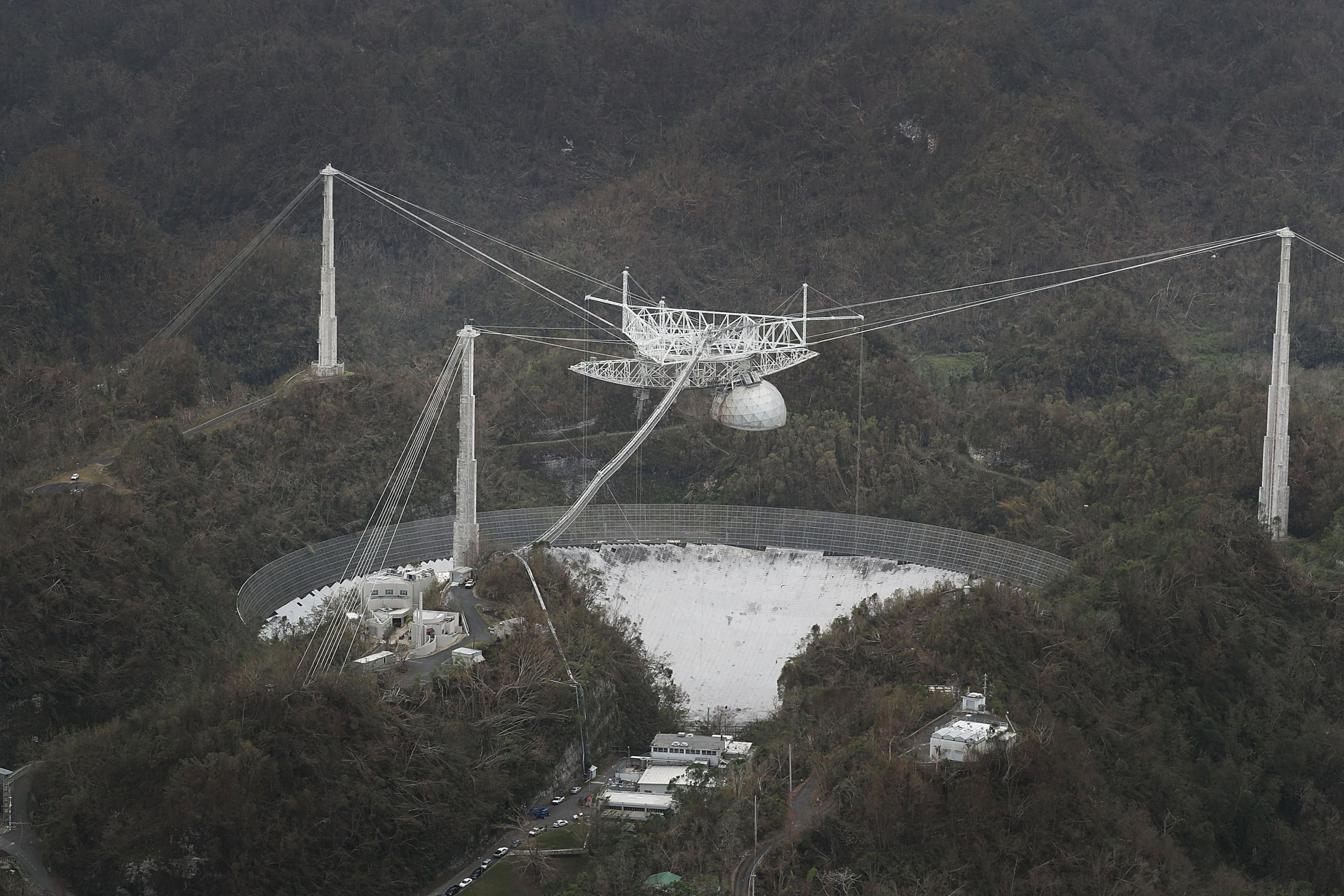
Updated | When Hurricane Marie swept through Puerto Rico, it left behind extensive damage to many structures, including the Arecibo Observatory Planetary Radar—the world's second-largest single-dish radio telescope. Although the telescope's radio activity resumed in a matter of days, its ability to collect radio observations was halted for months. More than three months later, the telescope is finally back up and running as usual.
3200 Phaethon—an Apollo asteroid—came the closest to Earth it has ever been on December 16. On that date, the telescope captured high-quality images of the asteroid, which won't be in such close proximity to Earth until the year 2093, according to Space.com. The new radar images show off the asteroid's immense size, shape, as well a, a notable dark feature near one of its poles.
"These new observations of Phaethon show it may be similar in shape to asteroid Bennu, the target of NASA's OSIRIS-REx spacecraft, but more than 1,000 Bennus could fit inside of Phaethon," Patrick Taylor, a Universities Space Research Association (USRA) scientist and group leader for Planetary Radar at Arecibo Observatory, said in a statement. "The dark feature could be a crater or some other topographic depression that did not reflect the radar beam back to Earth."
The most powerful astronomical radar system on our planet recently provided the highest-resolution images to date of a near-Earth asteroid, 3200 Phaethon, during its Dec. close approach to Earth, ~1.1 million miles away: https://t.co/h1DhS6t9xY pic.twitter.com/XGziN6vtBn
— NASA (@NASA) December 23, 2017
Images also reveal Phaethon is larger than astronomers previously thought, measuring about 3.6 miles wide. Despite being classified as a "potentially hazardous object," it's unlikely that Phaethon will come into contact with Earth.
"Any body that's bigger than about 500 feet across and its orbit carries it within about 4.6 million miles of Earth at any point in its orbit is classified as a 'potentially hazardous' object," Bill Harwood, a CBS News space consultant, explained to the news outlet. "Meaning over millennia — lots and lots of time — gravitational interactions with the outer planets, you know, other objects in the solar system might perturb the orbit enough that it could actually impact the Earth."
It's unknown exactly where the massive object came from, but one theory suggests it used to be a comet; however, it's true origin has perplexed astronomers. In 1983, Pantheon became the first-ever asteroid to be discovered via satellite. For decades, the NASA-funded Arecibo Observatory has provided important images of both Pantheon and various other types of data to scientists.
"Arecibo is an important global asset, crucial for planetary defense work because of its unique capabilities,"Joan Schmelz, USRA Director and Deputy Director of Arecibo Observatory, said in a statement.
This article has been updated to include new information from NASA.
Uncommon Knowledge
Newsweek is committed to challenging conventional wisdom and finding connections in the search for common ground.
Newsweek is committed to challenging conventional wisdom and finding connections in the search for common ground.
About the writer
To read how Newsweek uses AI as a newsroom tool, Click here.








